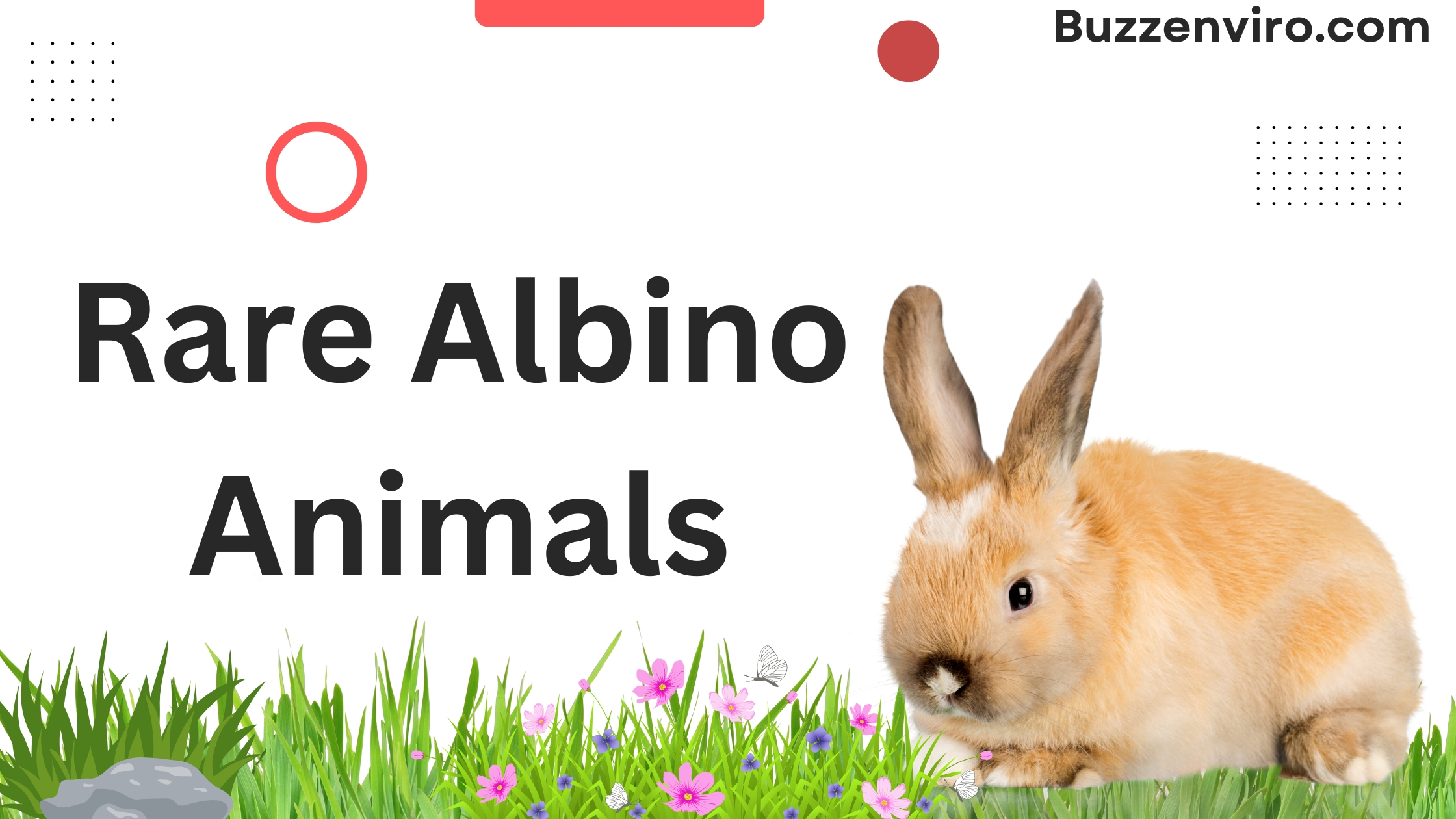In the animal world, color plays a vital role in survival and communication. It can indicate an animal’s sex, warn predators of danger, or provide camouflage for hunting or evading threats. However, some animals lack the pigment melanin, which is responsible for their distinctive colors. This condition, known as albinism, results in pale skin, hair, and eyes. In this blog we will learn ten rare albino animals and the unique challenges they face.
Rare Albino Animals
1. Hummingbird

The ruby-throated hummingbird, a common species in North America, occasionally produces albino individuals characterized by pinkish eyes, feet, and bills. The likelihood of albinism in birds is extremely rare—estimated at just 0.0005%. Documented sightings of albino ruby-throated hummingbirds have occurred in states like Ohio and Alabama, although not all have been officially verified.
2. Alligator

Albino American alligators are exceptionally rare, with notable individuals like Claude at the California Academy of Sciences captivating visitors. These reptiles are especially vulnerable in the wild due to their inability to camouflage and their heightened sensitivity to sunlight, which can cause severe sunburns. In Louisiana, several albino alligators have been discovered in the same nests, suggesting a genetic predisposition to the condition.
3. Ferret

Ferrets, already known for their poor vision, face additional challenges when albino. Their lack of pigmentation not only affects their fur but also their eyes, making them more sensitive to sunlight and prone to visual impairments. Despite these difficulties, studies show that albino ferrets can perform comparably to their pigmented counterparts in certain vision-based tasks.
4. RattleSnake

Albino rattlesnakes, such as the western diamondback, stand out with their white underbellies and yellow-tinted scales. Unlike their typically muted gray or brown relatives, their pale coloration makes them more conspicuous to predators. A famous albino rattlesnake named Hector lived at Arizona State University until 2019, and a wild specimen was captured and released in Texas in 2021.
5. Gorilla

Snowflake, the world’s only known albino gorilla, lived at the Barcelona Zoo in Spain until 2003. His albinism made him prone to skin cancer, which ultimately led to his euthanasia. Genetic studies of Snowflake revealed that he was inbred, marking the first documented case of inbreeding among wild Western lowland gorillas.
Also read:- The World’s 10 Most Important Endangered Species
6. Turtle

In 2016, a rare albino turtle hatchling was spotted on a beach in Queensland, Australia. Albino turtles are incredibly uncommon, with an occurrence rate of approximately one in hundreds of thousands of eggs. These turtles face significant survival challenges due to their inability to blend into their environment and their increased vulnerability to predators.
7. Kangaroo

Even in Australia, where kangaroos are a common sight, kangaroos are exceedingly rare albino animal. These animals are particularly susceptible to predators due to their poor vision and hearing, conditions often associated with albinism. In 2021, a white kangaroo named Cosmo was born at New York’s Animal Adventure Park. However, Cosmo was diagnosed with leucism, a condition similar to albinism but with dark eyes.
8. Buffalo

White Cloud, an albino bison cared for at the National Buffalo Museum in North Dakota, lived an extraordinary 19 years and gave birth to 11 calves, including another white bison named Dakota Miracle. Albino bison hold cultural significance among many Native American tribes, who regard them as sacred and integral to the Legend of the White Buffalo.
9. Snail

Snails are the rare albino animals, unlike their all-white counterparts such as the white garden snail, are rare and vulnerable. In 2011, a giant carnivorous albino snail was discovered in New Zealand—only the second recorded instance. While they can be kept as pets, their lack of pigmentation makes them easy prey in the wild.
10. Fishing Cat

Fishing cats, listed as vulnerable by the IUCN, are already rare, but albino individuals are even more exceptional. Between 2001 and 2002, four albino fishing cats were captured in Bangladesh’s Haor Basin, suggesting a localized genetic predisposition. Recent studies have grouped albino fishing cats with other animals exhibiting pseudomelanism, a condition characterized by unusual pigmentation patterns, such as polka-dotted zebras and leucistic dolphins.
Why Are Rare Albino Animals Often Kept in Captivity?
Surviving in the wild is particularly challenging for albino animals. Their lack of pigmentation makes them conspicuous to predators and susceptible to sunburn, while poor vision further hinders their ability to evade threats. Due to these vulnerabilities, many albino animals are kept in captivity for their protection, ensuring their survival and allowing humans to appreciate their rarity and beauty.





